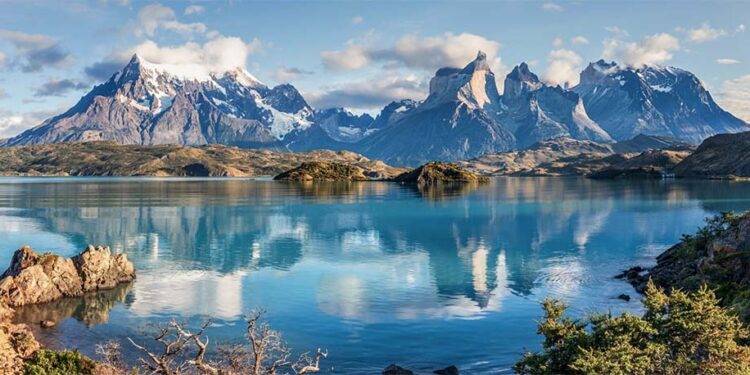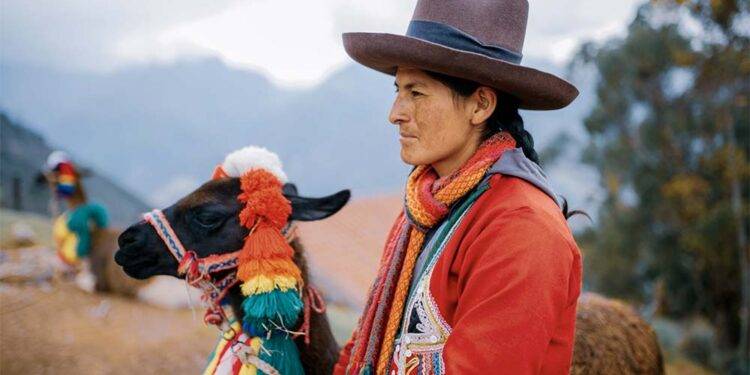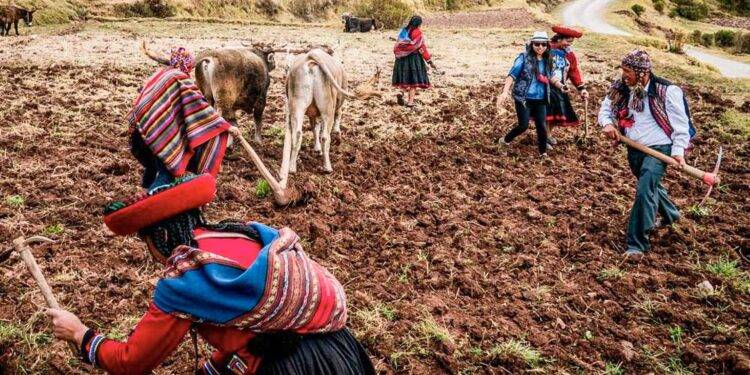The Quechua people are indigenous peoples of South America , living in the Andes. Which spans several countries including Peru, Ecuador, Bolivia, Chile, Colombia, and Argentina.
The South Americas Indigenous people have a rich history, culture, and language that have been preserved for centuries. Despite the effects of colonialism and modernization it is still very strong. Let us explore the Quechua people, their way of life, traditions, language, and their contributions to the world.

History of the Quechua People
As said before, The Quechua People are living in the Andes and have a very rich history. They are one of the largest indigenous groups in South America and their history dates back to the pre-Columbian era. In this time they lived in the Andes Mountains region of South America, which includes modern-day Peru, Ecuador, Bolivia, Chile, Colombia, and Argentina.
Often the Quechua are referred as the descendants of the Incas, but this is not completely true. The history of the Quechua people began many years before the Inca civilization. They have a long history of resistance against colonialism and cultural assimilation. In the 15th century, they were conquered by the Inca Empire, which imposed its culture and language on the Quechua people. However, the Quechua people maintained their traditions and language, which continued to evolve over time, even till this day.
When the Spanish arrived in South America in the 16th century, they attempted to impose their language and culture on the Quechua people. However, the Quechua people resisted, leading to the rise of several uprisings and revolts against the Spanish colonial rule. The most famous of these was the Túpac Amaru II rebellion, which took place in the late 18th century and was led by a Quechua leader who sought to overthrow the Spanish colonial government.

Quechuan Music and Dance
For the Quechua people, music and dance are integral parts of the Quechua culture. The music, which often tell stories of their ancestors, is usually played on traditional instruments such as the quena (a flute), charango (a small stringed instrument), and bombo (a drum).
Over the years the music and stories of the Andean people have been combined with modern music styles. For example the in Quechua singing band UCHPA, or bands using the guena (flute) in their music like in this song Sanjuanito Irlandes. Another upcoming talent is Renata Flores, who mixes the traditional Quechua sounds with modern-day styles as hip-hop and reggaeton.
For the Quechua people is dance also an important part of the Quechua culture. The most famous dance is the Huayno, which is performed during celebrations and festivals. The Huayno (huayñunakunay meaning “dancing while holding hands”) is characterized by its graceful movements while dressed in a colorful traditional dress. The huayno music can be different between regions, but most variations include the specific instruments listed above and recurring themes.

Traditional Dress of the Quechua People
The Quechua people are known for their intricate and colorful textiles, which are woven using traditional techniques. These techniques have been passed down for generations. The textiles are often used to make clothing, blankets, shawls and other household items.
Traditional patterns honor the Pachamama, (Mother Earth)
The traditional textile patterns honor Pachamama, or Mother Earth, and are also used to tell stories and convey important cultural messages. For example, the patterns and colors of the textiles often represent natural elements such as mountains, rivers, and animals.

Quechua Agriculture
The Quechua people have a deep understanding of agriculture and have developed several unique agricultural practices. One of these is the Andean agricultural system, which involves the use of terraced farming to grow crops on steep mountain slopes. This system allows the Quechua people to grow a variety of crops, including maize, potatoes, and quinoa.

The Quechua Language
The Quechua language is one of the most widely spoken indigenous languages in South America. It is estimated that there are over 10 million Quechua speakers worldwide. The Quechua language has a rich history and has been passed down through generations for centuries. It is an integral part of the Quechua culture and is used in their music, poetry, and storytelling.
The Quechua language has also contributed to the world’s vocabulary. Several Quechua words have been adopted into the English language, including “llama,” “puma,” and “condor.”
Aside from the Incas, there are several other historic Quechua-speaking groups. For example, the Chanka (Chanca) of Ayacucho, the Cañari of Tumebamba in Ecuador, and the Qulla of Western Bolivia.

From Ancient Times to Modern Day Struggles
The Quechua people are a vibrant and resilient indigenous community. However, they continue to face many challenges and struggles in the modern world, including poverty, discrimination, and marginalization. Addressing these challenges will require a concerted effort to promote social justice, environmental protection, and cultural preservation, as well as to address the root causes of poverty and inequality.

































